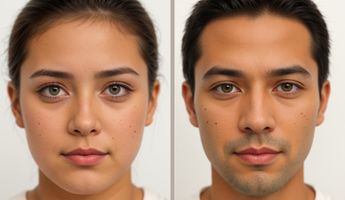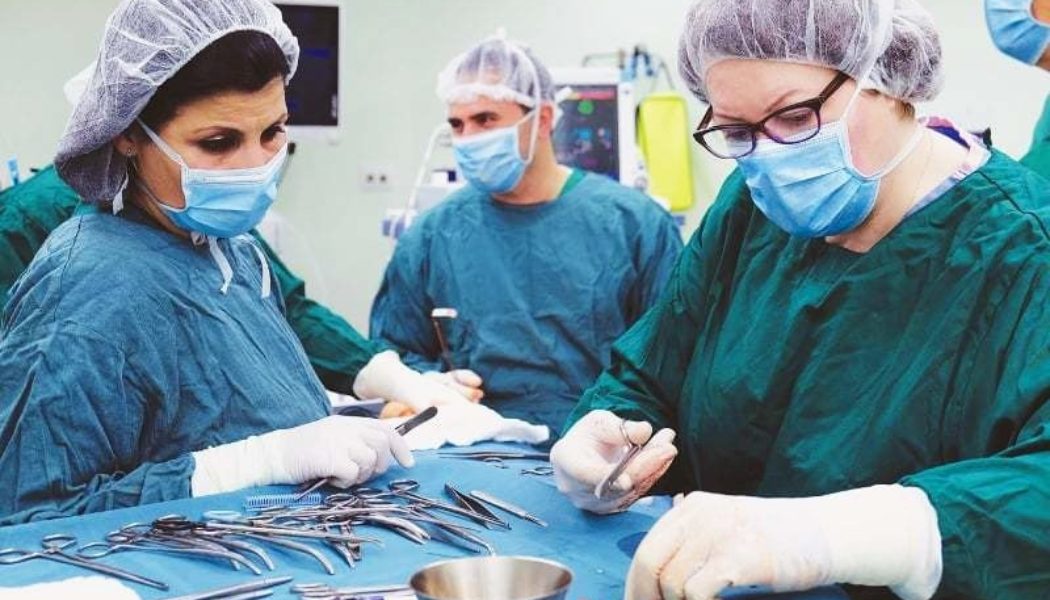Sex Reassignment Surgery (Female To Male) in Seoul
Search and Compare the Best Clinics and Doctors at the Lowest Prices for Sex Reassignment Surgery (Female To Male) in Seoul

Find the best clinics for Sex Reassignment Surgery (Female To Male) in Seoul
No pricing info available
Thailand offers the best prices Worldwide
Price: $ 556
From 98 verified reviews
cc a, 04 July 2020
Heart here6 months passed, very pleasant to the touch and shapeIsn't it famous for my heart?There is also a person who is in charge of post-management care alone.It is recommended if there is a person around the kindness
- Home
- South Korea
- Seoul
Compare Before & After Photos of _procedure_photos.phpSex Reassignment Surgery (Female To Male)


Half-side view


Front view


Half-side view


Front view


Front view


Front view


Front view


Front view
WHY US?
At Medijump, we're making medical easy. You can search, compare, discuss, and book your medical all in one place. We open the door to the best medical providers worldwide, saving you time and energy along the way, and it's all for FREE, no hidden fees, and no price markups guaranteed. So what are you waiting for?

Free

Best Price

Widest Selection

Risk-Free
What you need to know about Sex Reassignment Surgery (Female To Male) in Seoul

Some people are born male and some are born female. While there are some people who are transgender, whose gender identity does not match their assigned sex. Sex change surgery, also known as gender reassignment surgery (GRS) or sex reassignment surgery (SRS) is there to help these people. This is a surgical procedure that changes the sex of a person. It changes a transgender person’s physical appearance according to there identified gender. It treats gender dysphoria in these people. This includes both feminization and masculinization surgeries. In masculinization surgery, there are two domains:
- Top surgery
- Bottom surgery.
In top surgery, mastectomy is performed to remove the breasts and give your chest a more male-like contour. Bottom surgery involves increasing the length of the clitoris which is called metoidioplasty, production of a penis, and scrotum which are known as phalloplasty and scrotoplasty respectively, and removal of the uterus that is a hysterectomy. This surgery is not for everyone. A number of things are considered before opting for surgery. However, normal people with assigned gender can also go for this if they want to.
Before the operation, your assigned sex does not correspond to your gender identity. You suffer from gender dysphoria. You feel uncomfortable in your skin. However; after the surgery, you are a person of your desired sex. You are converted from a female to a male.
What is the cost of Sex Reassignment Surgery (Female To Male) in Seoul?
Like any intricate healthcare process, the price for undergoing Sex Reassignment Surgery (Female To Male) is not a fixed figure in Seoul. The final tally significantly sways due to issues like the patient's comprehensive health status, distinct surgical necessities, and the operating surgeon's level of proficiency. It's vital, too, to factor in the cost of post-procedure care, prescribed medicines, and extra treatments, all of which substantially contribute to the total expenditure.
Moreover, distinct clinics situated in Seoul might provide an array of payment structures or offer financial aid alternatives. It's advisable to undertake thorough investigations or reach out to prospective clinics directly to obtain a precise cost prediction.
What does a Sex Reassignment Surgery (Female To Male) Procedure Involve?
Anesthesia is given to ensure that the patient does not suffer from pain during the surgery. Top and bottom surgeries are performed differently.
-
Mastectomy: It is performed in two ways. In one method, an incision is given around the areola and excessive fat and breast tissue are removed through it. The skin is left as it is for a year. It retracts in this period of time. This method leaves prominent scars. In the other method, excess skin is also removed along with the tissue and fat. This leaves fewer scars. After this, male-like the contour of the chest is obtained.
In the other step, female reproductive organs that are present inside your body are removed.
-
Hysterectomy: Total Hysterectomy is the removal of uterus and cervix. Another surgery, bilateral salpingo-oophorectomy (BSO) is performed to remove fallopian tubes. In this way, the entire female reproductive system is eliminated from the body.
After this, procedures for the construction of male reproductive organs begin. They include,
- Metoidioplasty: Androgenic hormones are given to increase the length of the clitoris. Length is increased to almost 1.6 to 2 inches.
- Phalloplasty: It is performed to create a penis or to increase the length of it. It can be done in 4 ways. All of these work on the same principle. A flap of skin is taken from a donor site of the body such as an arm or abdomen to make a penis out if it. It is joined to the urethra. This is the most complicated step of GRS. An erectile prosthesis is inserted into the penis to achieve an erection.
- Scrotoplasty: Scrotum is produced from labia majora and prosthetic testes are inserted into it.
How Long Should I Stay in Seoul for a Sex Reassignment Surgery (Female To Male) Procedure?
It is a long procedure involving a number of surgeries. There is top surgery and bottom surgery. Mastectomy takes 2 to 3 hours in the operation theatre. While bottom surgery requires more time. It takes 8 to 10 hours for a female to male GRS. You should plan to stay in the area for at least 14 days after your Procedure, During this duration, your health conditions are monitored regularly and your stitches are removed after 10 to 14 days. You can go home when allowed to by your physician.
What's the Recovery Time for Sex Reassignment Surgery (Female To Male) Procedures in Seoul?
You will have to take 2 weeks off work. After 2 weeks, you can start a light activity and can go back to office work. A Patient will need more time to get back to physical work. You can start strenuous activity 4 to 6 weeks after bottom surgery. Pain killers are given in this period to deal with moderate pain. Scars take some time to fade away. It can take years after the surgery to settle both physically and psychologically.
What sort of Aftercare is Required for Sex Reassignment Surgery (Female To Male) Procedures in Seoul?
Following points should be considered to look after you post-surgery:
- Go for regular check-ups.
- Take your medicines as and when prescribed by the doctor.
- Live with someone who takes care of you while you recover.
- Abstain from sexual activity till allowed by your doctor.
- Do not take a bath or shower with bandages intact. It can cause infection.
- Avoid strenuous exercise in the early few days after surgery.
- Do not lift heavy objects; it puts pressure on your stitches.
- Avoid excessive movement. Take a rest.
What's the Success Rate of Sex Reassignment Surgery (Female To Male) Procedures in Seoul?
The success rate of Sex Reassignment Surgery (Female To Male) within Seoul depends on a spectrum of elements. Such factors encompass the proficiency and prior expertise of the surgical unit, the comprehensive health condition of the person, their mental readiness, and compliance with the suggested after-treatment attention. An abundance of research has pointed out that a majority of individuals who choose Sex Reassignment Surgery (Female To Male) acknowledge a marked enhancement in their lifestyle quality, elevated mental health, and a noteworthy contentment level with the physical transformations.
According to a study, 97% of the people who went through this surgery found their results satisfactory. You need to be sure before opting for it, as it is a lifetime decision. GRS is mainly for the treatment of dysphoric and transgender people.
Are there Alternatives to Sex Reassignment Surgery (Female To Male) Procedures in Seoul?
The following are some alternatives to sex reassignment surgery:
- Hormone replacement therapy: this therapy aids in changing your secondary sex characteristics according to your desired sex. In the case of female to male sex change, testosterone is given. This induces hair growth and coarseness of voice. It reduces breast growth and changes in fat distribution in your body. It also stops menstruation.
- Altering physical appearance: you can alter your physical appearance, your dressing, your hair, your makeup in accordance with your desired sex. Do regular exercises to build up muscle mass which will make you look like a male.
- Psychological counseling: it will make you handle your personality. Gender reassignment surgery cannot be reversed. Therefore, you should make your decision wisely.
- Cosmetic surgery: it is a wide field covering a number of domains. It can alter your facial features, your body fat, your waist, your stomach, your chest to transform you into your desired gender. You can go for liposuction, mastectomy, Botox, fillers, Rhinoplasty, etc.
All of the methods, mentioned above are not permanent but are helpful. For permanent change, you have to go for sex reassignment surgery.
What Should You Expect Before and After the Procedure
Prior to initiating the Sex Reassignment Surgery (Female To Male), it is necessary to ensure each individual undergoes thorough psychological analysis and counseling. These checks serve to affirm the patient's emotional readiness and ability to cope with the aftermath of the procedure. In addition to mental health evaluations, multiple medical assessments are implemented to inspect their overall health state. Recognizing any pre-existing health issues is of utmost importance as they can potentially impact the result of the surgery. Regularly scheduled consultations with knowledgeable healthcare professionals are fundamental to this process. These meetings will entail in-depth explanations and discussions to help formulate a holistic understanding of the entire procedure and its ensuing effects.
After the execution of the surgical procedure, there's a need for mental readiness for an extensive recovery period. This stage typically demands diligent post-procedure care and major lifestyle adjustments. Surgical recovery isn't typically a swift process - it's a path that entails physical changes and lifestyle adaptations, necessitating a period of adjustment for the patient. The adoption of healthy habits becomes particularly important during this period. Activities like regular physical activity, adhering to a nutritious diet, and incorporating stress-relief practices are proven to carry several benefits. Moreover, in addition to the emphasis on physical recuperation, mental health should also be prioritized equally.
What are Potential Risks of Sex Reassignment Surgery (Female To Male)?
Each surgical procedure comes with inherent risks and potential complications, including Sex Reassignment Surgery (Female To Male). These might encompass general surgical risks such as infection, bleeding, or adverse reactions to anesthetic drugs. Specific to Sex Reassignment Surgery (Female To Male), there may also be healing-related risks, which could result in necrosis or lackluster cosmetic outcomes. Educating oneself about the possible complications of surgical procedures is beneficial for better preparation.
Additionally, extended exposure to hormonal treatment might escalate the risk of cardiovascular ailments or osteoporosis. There could also be mental health concerns such as depression or anxiety, which may spring from society's responses or personal adaptation to a new identity. Frequent consultations with a healthcare professional are essential to keep track of and mitigate any possible risks or complications.
Whilst the information presented here has been accurately sourced and verified by a medical professional for its accuracy, it is still advised to consult with your doctor before pursuing a medical treatment at one of the listed medical providers
No Time?
Tell us what you're looking for and we'll reachout to the top clinics all at once
Enquire Now

Popular Procedures in Seoul
Prices Start From $497

Prices Start From $1,552

Prices Start From $500

Prices Start From $1,000

Recommended Medical Centers in Seoul for Sex Reassignment Surgery (Female To Male)

- Interpreter services
- Translation service
- Religious facilities
- Medical records transfer
- Medical travel insurance
- Health insurance coordination
- TV in the room
- Safe in the room
- Phone in the room
- Private rooms for patients available

- Interpreter services
- Translation service
- Religious facilities
- Medical records transfer
- Medical travel insurance
- Health insurance coordination
- TV in the room
- Safe in the room
- Phone in the room
- Private rooms for patients available

- Interpreter services
- Translation service
- Religious facilities
- Medical records transfer
- Medical travel insurance
- Health insurance coordination
- TV in the room
- Safe in the room
- Phone in the room
- Private rooms for patients available

- Interpreter services
- Translation service
- Religious facilities
- Medical records transfer
- Medical travel insurance
- Health insurance coordination
- TV in the room
- Safe in the room
- Phone in the room
- Private rooms for patients available

- Interpreter services
- Translation service
- Religious facilities
- Medical records transfer
- Medical travel insurance
- Health insurance coordination
- TV in the room
- Safe in the room
- Phone in the room
- Private rooms for patients available

- Interpreter services
- Translation service
- Religious facilities
- Medical records transfer
- Medical travel insurance
- Health insurance coordination
- TV in the room
- Safe in the room
- Phone in the room
- Private rooms for patients available

- Interpreter services
- Translation service
- Religious facilities
- Medical records transfer
- Medical travel insurance
- Health insurance coordination
- TV in the room
- Safe in the room
- Phone in the room
- Private rooms for patients available

- Interpreter services
- Translation service
- Religious facilities
- Medical records transfer
- Medical travel insurance
- Health insurance coordination
- TV in the room
- Safe in the room
- Phone in the room
- Private rooms for patients available

- Interpreter services
- Translation service
- Religious facilities
- Medical records transfer
- Medical travel insurance
- Health insurance coordination
- TV in the room
- Safe in the room
- Phone in the room
- Private rooms for patients available

- Interpreter services
- Translation service
- Religious facilities
- Medical records transfer
- Medical travel insurance
- Health insurance coordination
- TV in the room
- Safe in the room
- Phone in the room
- Private rooms for patients available
Sex Reassignment Surgery (Female To Male) in and around Seoul
About Seoul
Seoul is the capital city of South Korea and is one of the most affluent cities in Asia with high per capita income. Seoul is a city of differences as you can find anything from ancient monuments and palaces to modern skyscrapers. Every year the city attracts over 10 million tourists from different parts of the world. While some visit Seoul to enjoy its rich culture, others come to experience the fascinating metropolitan vibe, large numbers of medical tourists visit this busy city to undergo various medical procedures for cheaper prices and to enjoy the Korean hospitality. As per reports from the South Korean Ministry of Health & Welfare, the number of medical tourists in 2016 increased to 364,000, which is 23% more than in 2015. Some of the more popular procedures sought-after in Seoul are gynecology related treatments, stem cell therapy, treatments in neurology & endocrinology, laser treatments, transplants, and cardiology.
According to the Ministry of Health and Welfare, most medical tourists are from China, Uzbekistan, UAE, Japan, and Canada. Seoul is dynamically emerging as one of the most preferred destinations for medical tourism. The city proudly houses one JCI accredited hospital. The other top-rated medical hospitals include the Severance Hospital, Asan Medical Center, Seoul National University Hospital, MizMedi Women's Hospital. The world-class hospitals comprise of VIP rooms, exceptional medical facilities, and highly-reputed physicians. Doctors are fluent in English, Korean, Japanese, and French.
Popular Areas in Seoul
The beautiful River Han flows through the heart of the city. It divides Seoul into North and South and you will find most of the ancient palaces and historical sites in the North. The Southside is quite modern and trendy with neighborhoods like Gangnam which is also the business hub of the city. It is also the residential part of the city with many apartments, and shopping malls.
- River Han: Is the favorite location for both locals and tourists. Here, you can enjoy indulging in exciting water activities such as windsurfing, water skiing, fishing, sailing, and swimming. The banks of the river are the perfect place to lounge and see the lights of the city at night.
- Banpo Bridge: Connects the districts Seocho and Yongsan and It was the first double-deck bridge built in South Korea and is covered with 10000 lights and the Rainbow Fountain's colored water rains down the side of the bridge.
- Gangnam: It is the most trendy neighborhood and is home to Asia's largest shopping mall, COEX, and several high-end restaurants.
- Hongdae: Four Korean Universities lie close to the neighborhood. Hongdae houses a number of theme-based restaurants and an array of boutiques that cater to the needs of college-goers. Several music venues and glitzy nightclubs make it a perfect place to enjoy the vibrant nightlife.
- Myeongdong: Is the best and the largest shopping destination in Korea. It is a shopping mega where you can find clothes, cosmetics, stylish handbags, shoes and accessories, and Jewelry at affordable prices.
Weather and Climate in Seoul
As Seoul lies close to the coast of the Yellow Sea, the climate is continental. Summer and Winter are the two distinct seasons in Seoul. Summer is sultry, hot, and rainy, whereas winter is cold and sunny. The transitional periods are the spring and autumn, which are mild and pleasant.
- Winter: November to February. The average temperature is around 0°C during winter. The cold air blows in from Asia and during the night time, the temperature can drop to -20°C but it rarely snows during winter.
- Spring: March to May. Spring is mild and it rains occasionally.
- Summer: June to August. Seoul receives about 80 mm of rainfall during the summer season. July is the wettest month of the year. The temperature can rise to 35°C during the hot summer days.
- Autumn: September-October. Autumn is pleasant and rainfall gradually decreases during these months.
Getting around in Seoul
Incheon International Airport lies 48 km west of Seoul. It is the largest in the country and one of the busiest airports in the world. The airport is luxurious with an ice-skating rink, casinos, and spas. The airport operates several domestic and international flights to varied parts of the world.
Seoul has one of the finest public transportation systems in the world.
- Seoul Metropolitan subway: It is the fastest and cheapest mode of transportation. There is a total of 22 lines in operation and it costs 0.44$ for a single journey. You can buy tickets at the vending machines found in all subway stations.
- Seoul public buses: There are four different types of buses running in Seoul, each one covering different routes. The cost varies from 0.92$ to $1.63, depending on the bus type and the distance traveled.
- Taxis: Are expensive and are ideal for a large group of people. Regular, deluxe, jumbo, and International taxis are available. The major differences being the size and fare.
Tourist visa in Seoul
South Korea exempts the citizens of 117 countries from obtaining a valid tourist visa to enter the country. Australia, Chile, Greece, Germany, Hungary, Italy, Mexico, Russia, Switzerland, UK, US are some of the visa-exempted countries. They can stay visa-free for a maximum of 90 days.
Citizens of countries like India, China needs to apply for a tourist visa with all the required documents. The visa fee comes to around $30.
Additional Information
- The official currency of South Korea is the Korean Republican Won (KRW). One US dollar is approximately equivalent to 1149 KRW.
- You can find ATMs across the City. Some accept foreign cards and dispense cash. You can exchange your currencies to KRW in banks and money exchange booths.
- Hangul is the national and official language of South Korea. Koreans who are under the age of 40 years understand and speak English better than the rest of the locals.
- Most people in Korea are not affiliated with any religion. The same holds true in Seoul. Though, a small number of people practice Confucianism and Buddhism.
- Some of the public holidays in Seoul include New Year's Eve, Korean New Year, Buddha's birthday, Constitution day, Harvest festival, Hangeul day and Christmas.
Popular Searches
- Plastic Surgery in Thailand
- Dental Implants in Thailand
- Hair Transplant in Thailand
- Breast Augmentation Thailand
- Gastric Sleeve in Thailand
- Gender Reassignment Surgery in Thailand
- Laser Hair Removal in Bangkok
- Botox in Bangkok
- Dermatology in Bangkok
- Breast Augmentation in Bangkok
- Coolsculpting in Bangkok
- Veneers in Turkey
- Hair Transplant in Turkey
- Rhinoplasty in Turkey
- Stem Cell Therapy in Mexico
- Rhinoplasty in Mexico
- Liposuction in Mexico
- Coolsculpting in Tijuana
- Rhinoplasty in Korea
- Scar Removal in Korea
- Gastric Sleeve in Turkey
- Bone Marrow Transplant in India
- Invisalign in Malaysia
- Plastic Surgery in the Dominican Republic
- Tummy Tuck in the Dominican Republic
- Plastic and Cosmetic Surgery in Poland
- Rhinoplasty in Poland
- Hair Implant in Poland
- Dental Implants in Poland
- IVF in Turkey
